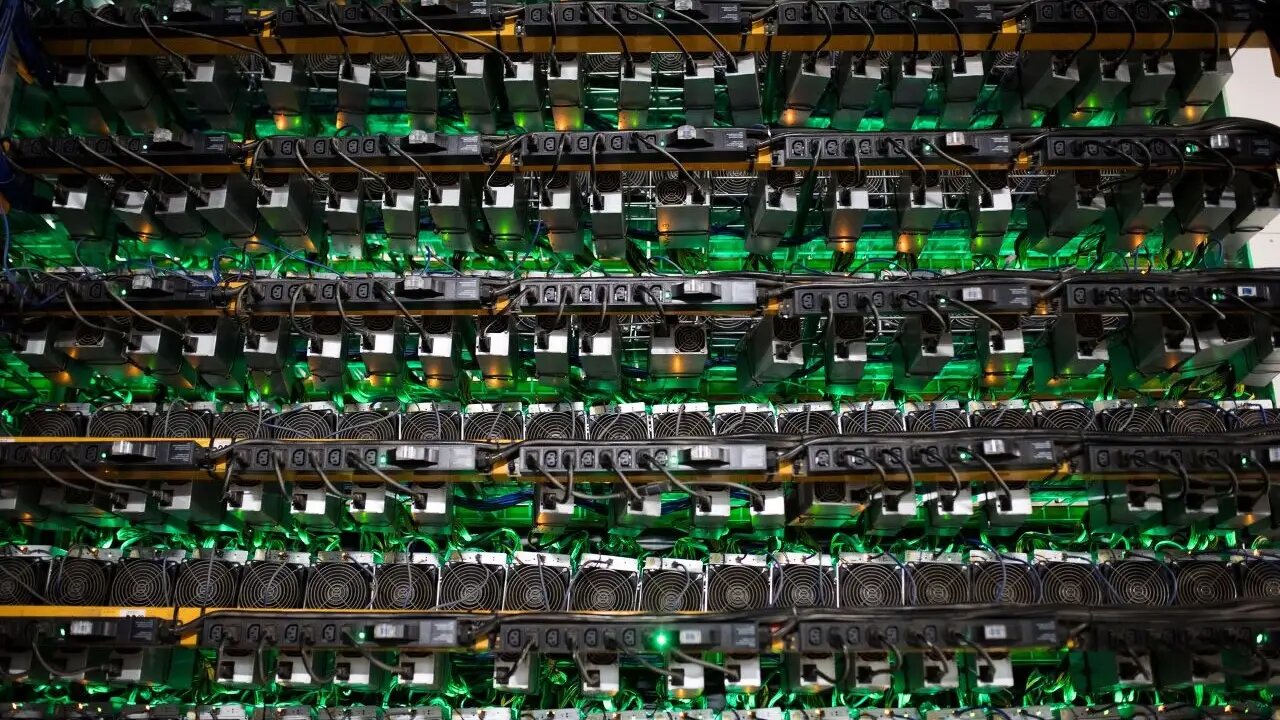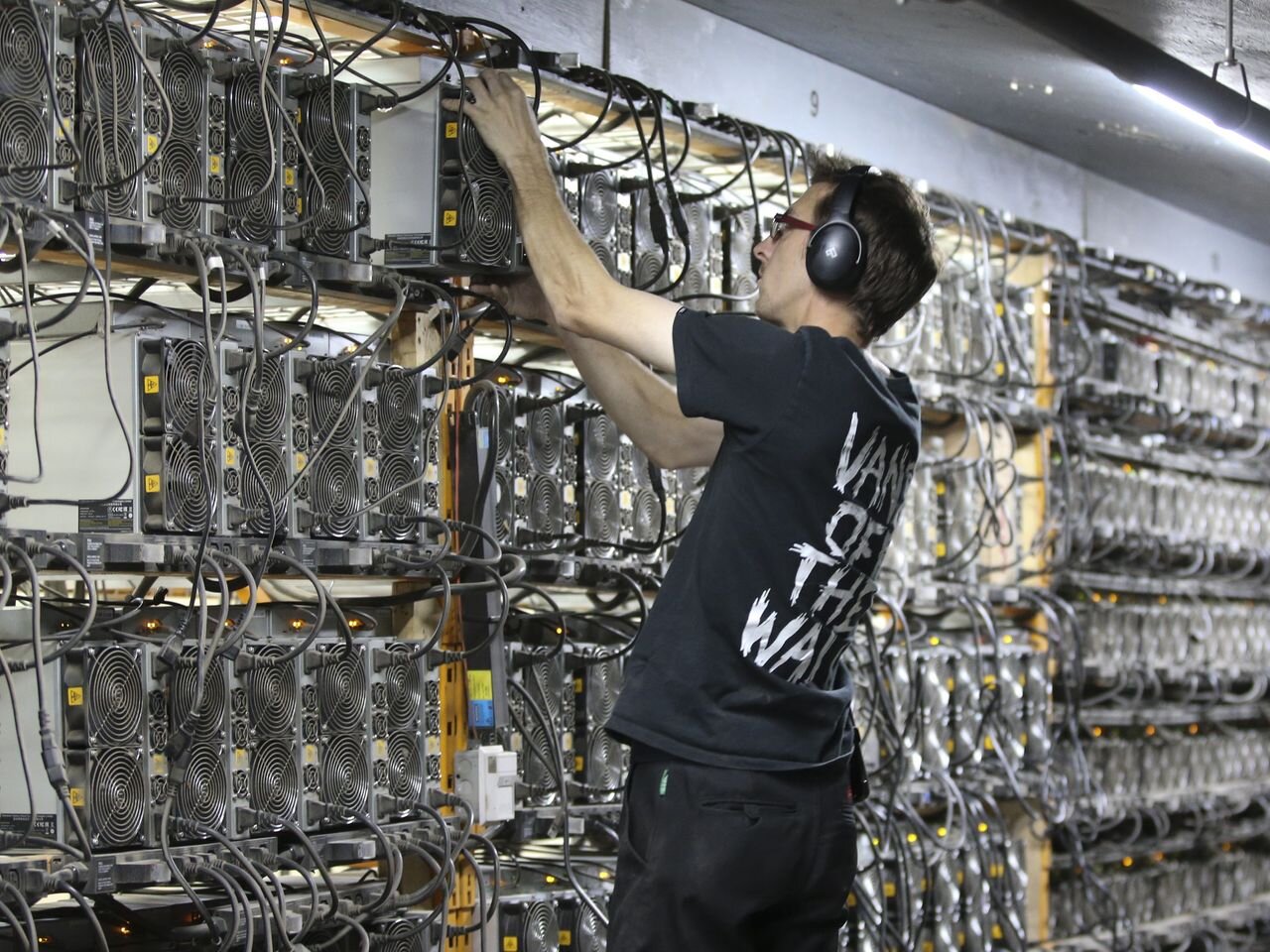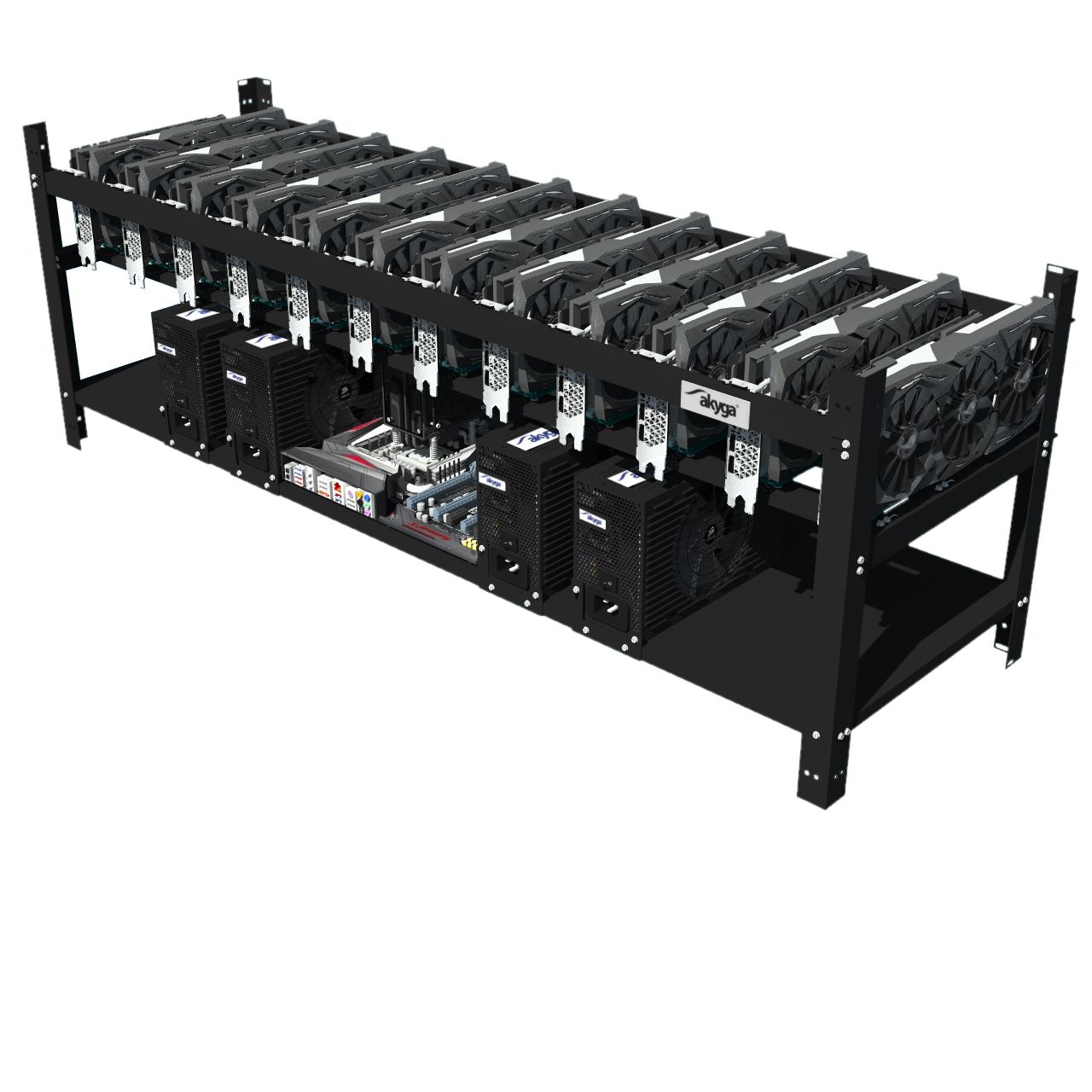Introduction
Cryptocurrency has been a hot topic in recent years, with Bitcoin and other digital currencies dominating headlines. But behind the scenes, an essential process called mining plays a critical role in the functioning of these cryptocurrencies. But what exactly does mining crypto mean?
Cryptocurrency offers a digital alternative to traditional currencies, enabling secure, peer-to-peer transactions without the need for intermediaries like banks. Unlike physical currencies, which are printed and regulated by central authorities, cryptocurrencies are decentralized and generated through a process known as mining.
Mining crypto involves solving complex mathematical problems to validate and verify transactions on the blockchain network, the decentralized ledger that keeps a record of all cryptocurrency transactions. Miners contribute their computational power to the network by running specialized software on powerful computers, and in return, they are rewarded with newly minted coins as well as transaction fees.
The concept of mining crypto may sound abstract and technical, but it serves two crucial purposes. First, it ensures the security and integrity of the cryptocurrency network. By solving mathematical puzzles, miners validate transactions and prevent fraud or double-spending. Second, mining creates new cryptocurrency units and introduces them into circulation, helping to control the supply and maintain the stability of the digital currency.
It’s important to note that not all cryptocurrencies can be mined. Some, like Bitcoin, are mineable, while others have a fixed supply, meaning that all the coins have already been created and distributed. For mineable cryptocurrencies, the mining process is an integral part of the ecosystem, and it plays a significant role in the network’s operations and sustainability.
In the following sections, we will dive deeper into the details of how mining crypto works, the different types of mining, the benefits and challenges associated with mining, and the environmental impact of this energy-intensive process.
What is Cryptocurrency?
Cryptocurrency is a digital or virtual form of currency that utilizes cryptography for secure financial transactions, control the creation of new units, and verify the transfer of assets. It operates on decentralized networks, typically based on blockchain technology, which ensures transparency, immutability, and integrity of the transactions.
Unlike traditional forms of currency issued by central banks, cryptocurrencies are not governed by any central authority. Instead, they rely on cryptographic algorithms and consensus mechanisms to validate and record transactions. This decentralized nature eliminates the need for intermediaries and enables direct peer-to-peer transfers, reducing fees and processing times.
One of the most well-known cryptocurrencies is Bitcoin, which was introduced in 2009 by an anonymous person or group known as Satoshi Nakamoto. Bitcoin paved the way for the development of numerous other cryptocurrencies, often referred to as altcoins, such as Ethereum, Litecoin, and Ripple.
Cryptocurrencies are typically stored in digital wallets, which can be accessed through various means, including desktop or mobile applications. Each wallet has a unique address, consisting of a public key and a private key, which are used to send and receive funds securely.
The underlying technology powering cryptocurrencies is blockchain. A blockchain is a decentralized and distributed ledger that records all transactions across a network of computers. Each transaction is grouped into a block and linked to the previous block, forming a chain of blocks, hence the name “blockchain.” This technology ensures the security and immutability of transactions, making it extremely difficult for fraudulent activities to occur.
In addition to facilitating financial transactions, cryptocurrencies have also revolutionized other industries. For example, blockchain technology is being used to create decentralized applications (DApps) and smart contracts, which automate and streamline various processes, such as supply chain management, voting systems, and decentralized finance (DeFi) applications.
Overall, cryptocurrency has disrupted the traditional financial landscape by offering a decentralized and secure form of digital currency. Its potential for innovation and its ability to empower individuals with financial autonomy have attracted significant attention from both individuals and institutions alike.
What is Mining?
Mining, in the context of cryptocurrency, refers to the process of validating and recording transactions on the blockchain network. It involves solving complex mathematical problems using powerful computers to confirm the accuracy of transactions and add them to a block within the blockchain.
Mining serves two essential purposes in the cryptocurrency ecosystem. First, it ensures the security and integrity of the network. By solving mathematical puzzles, miners verify the authenticity of transactions, preventing fraud and double-spending. This decentralized validation process eliminates the need for a central authority and ensures the trustworthiness of the entire blockchain.
Secondly, mining is responsible for the creation of new cryptocurrency units. Miners compete to solve mathematical puzzles, and the first miner to solve it successfully adds a new block to the blockchain and is rewarded with newly minted coins as well as transaction fees. This process introduces new cryptocurrency units into circulation and helps maintain the stability and supply control of the digital currency.
Mining requires substantial computational power and specialized hardware, such as ASIC (Application-Specific Integrated Circuit) miners, to perform the complex calculations necessary for solving the mathematical problems. These mining rigs consume significant amounts of electricity and generate a considerable amount of heat.
The mining process follows a consensus mechanism called Proof of Work (PoW), which requires miners to demonstrate their computational effort to validate and secure the blockchain. Miners compete against each other, and the miner with the most computational power has a higher chance of solving the puzzle and adding a new block to the blockchain.
As the popularity of cryptocurrencies has grown, mining has become increasingly competitive and resource-intensive. Miners must invest in expensive hardware and bear the costs of electricity to remain competitive in the mining ecosystem.
It’s important to note that not all cryptocurrencies are mineable. Some cryptocurrencies, like Bitcoin, use the PoW consensus algorithm, while others, like Ethereum, are transitioning to a more energy-efficient consensus mechanism called Proof of Stake (PoS).
In PoS, instead of solving complex puzzles, validators are chosen to create new blocks based on the number of coins they hold and commit as collateral. This energy-efficient alternative is seen as a more sustainable solution for the cryptocurrency industry.
Overall, mining plays a vital role in the cryptocurrency ecosystem by ensuring transaction security, regulating the supply of new coins, and maintaining the integrity of the blockchain network. However, the energy consumption associated with mining is a subject of concern, prompting ongoing discussions about the need for more environmentally friendly alternatives in the future.
How Does Mining Crypto Work?
Mining crypto involves a series of complex steps that enable the validation and recording of transactions on the blockchain network. Let’s explore how this process works in more detail.
1. Transaction Verification: Miners begin by collecting unconfirmed transactions from the network. These transactions are bundled together into blocks, each containing a unique identifier known as a hash. Miners verify the transactions within the block to ensure their validity.
2. Finding the Nonce: Miners then start the process of finding a nonce, which is a random number added to the block’s data. The objective of finding the nonce is to create a hash output that meets certain predefined criteria. Miners use their computational power to perform numerous calculations and search for the correct nonce.
3. Solving the Puzzle: By repeatedly adjusting the nonce value and recalculating the hash, miners aim to find a hash that begins with a specific number of zeros. This process requires significant computational power and is known as the Proof of Work (PoW) consensus mechanism.
4. Broadcasting the Solution: Once a miner finds the correct nonce and solves the puzzle, they broadcast the solution to the network. Other miners verify the solution and the validity of the block’s transactions. If the solution is valid, the block is added to the blockchain, and the miner is rewarded.
5. Reward and Incentives: Miners are rewarded for their efforts with newly minted cryptocurrency coins and transaction fees from the transactions within the block. The reward system encourages miners to continue participating in the mining process.
6. Difficulty Adjustment: To maintain a consistent block creation time, the network adjusts the mining difficulty periodically. As more miners join the network, the difficulty increases to ensure that blocks are not mined too quickly. Conversely, if miners leave the network, the difficulty decreases to maintain the block creation rate.
Mining crypto is a competitive process, and the reward goes to the miner who solves the mathematical puzzle first. As mining has become more popular, the competition has intensified, requiring miners to invest in specialized hardware, such as ASIC miners, to increase their chances of mining a new block.
It’s worth noting that different cryptocurrencies may have variations in their mining processes. Some cryptocurrencies have implemented alternative consensus mechanisms, such as Proof of Stake (PoS), which involves validators being chosen to create new blocks based on the number of coins they hold and commit as collateral, rather than solving computational puzzles.
Overall, mining crypto is a fundamental process that ensures the security and integrity of blockchain networks. It incentivizes miners to contribute their computational power and participate in the validation and creation of new blocks, facilitating the smooth operation of cryptocurrencies.
Types of Mining
Mining in the cryptocurrency world encompasses various methods and approaches, each with its own characteristics and requirements. Here are some of the most common types of mining:
1. Proof of Work (PoW) Mining: This is the traditional method of mining, used by cryptocurrencies like Bitcoin. Miners solve complex mathematical problems through intensive computational work to validate transactions and secure the network. The miner who solves the problem first earns the right to add a new block to the blockchain and receive the block reward.
2. Proof of Stake (PoS) Mining: Unlike PoW, PoS mining does not rely on computational power. Instead, it selects validators to create new blocks based on the number of coins they hold and commit as collateral. Validators are chosen randomly, typically in proportion to the number of coins they possess. PoS mining is more energy-efficient compared to PoW and encourages users to ‘stake’ their coins for a chance to be selected as a validator.
3. Masternode Mining: Masternodes are full nodes that provide additional services to a blockchain network. To run a masternode, users are required to hold a certain number of coins as collateral, demonstrating their commitment to the network. Masternodes perform tasks such as facilitating instant transactions, maintaining network consensus, and executing specific protocols or features. In return, masternode operators receive rewards.
4. Merged Mining: Merged mining allows miners to simultaneously mine multiple cryptocurrencies that share the same hashing algorithm. Miners can mine the primary cryptocurrency as well as auxiliary cryptocurrencies without utilizing additional computational power. This practice helps smaller cryptocurrencies leverage the security and network effect of larger cryptocurrencies while maintaining their independence.
5. Cloud Mining: Cloud mining involves renting computing power from remote data centers to mine cryptocurrencies. Miners can lease hashing power from service providers who manage the hardware and oversee the mining operations. This method eliminates the need for miners to invest in expensive hardware and deal with the associated maintenance and electricity costs. However, it is crucial to research and choose reputable cloud mining providers to avoid potential scams.
6. GPU Mining: Graphics Processing Units (GPUs) have become popular for mining cryptocurrencies due to their high computational power. GPU mining is especially suitable for cryptocurrencies that are resistant to ASIC miners, as GPUs offer greater flexibility and can handle a wide range of mining algorithms. This type of mining is often used for altcoins and can be performed with off-the-shelf gaming computers.
It’s important to note that the type of mining a cryptocurrency employs depends on its underlying consensus mechanism and design choices. Some cryptocurrencies may even combine multiple mining methods to achieve their desired objectives.
The choice of mining method depends on factors such as the desired level of decentralization, energy efficiency, hardware availability, and the goals of the cryptocurrency project. As the cryptocurrency landscape continues to evolve, new mining methods may emerge, providing innovative and sustainable ways of securing and supporting blockchain networks.
Benefits of Mining Crypto
Mining crypto offers several benefits to both miners and the cryptocurrency ecosystem as a whole. Let’s explore some of the key advantages of mining:
1. Transaction Validation: Mining plays a crucial role in validating and verifying transactions on the blockchain network. Miners ensure the accuracy and security of transactions, preventing fraud and double-spending. This validation process helps maintain the integrity of the cryptocurrency ecosystem, instilling trust among users.
2. Decentralization: Mining contributes to the decentralized nature of cryptocurrencies. The involvement of multiple miners distributed across the network ensures that no single entity has complete control over the validation process. This decentralization enhances security, as it becomes significantly more difficult for malicious actors to manipulate the blockchain.
3. Incentives for Participation: Mining provides incentives for individuals to participate in the cryptocurrency network. Miners who successfully validate transactions and add them to the blockchain are rewarded with newly minted coins and transaction fees. These incentives motivate miners to dedicate their computational power and resources to secure the network, contributing to its overall stability and growth.
4. Distribution of Newly Minted Coins: Through the mining process, new cryptocurrency coins are introduced into circulation. This not only rewards miners but also helps in the distribution of the digital currency. As a result, mining can contribute to a more widespread ownership and accessibility of the cryptocurrency, making it more inclusive and decentralized.
5. Network Security: Cryptocurrency mining enhances the security of the underlying blockchain network. The computational effort required by miners to solve complex mathematical problems acts as a deterrent against potential attacks. The decentralized nature of mining and the consensus mechanism help protect the network against fraudulent activities and ensure the immutability of the transactions.
6. Support for Blockchain Operations: Miners provide computational power and resources that are essential for the operation of blockchain networks. By contributing their hardware and energy, miners help to process and verify transactions, maintain the blockchain’s integrity, and ensure the overall functionality of the cryptocurrency ecosystem.
7. Investment and Profit Potential: Mining can be a profitable venture for individuals and organizations that have the necessary resources and expertise. As the value of cryptocurrencies increases, mining can generate profits through the rewards earned from successfully mining new blocks and collecting transaction fees. This potential for profitability attracts investors and contributes to the growth and development of the cryptocurrency market.
While mining crypto offers numerous benefits, it is important to be aware of the associated costs, including electricity consumption, hardware expenses, and environmental impact. As the industry evolves, there is ongoing research and development to optimize mining processes and explore more sustainable alternatives that minimize energy consumption and carbon footprint.
Overall, mining plays a vital role in the cryptocurrency ecosystem, supporting transaction validation, network security, and incentivizing participation. It provides opportunities for individuals and organizations to contribute to and benefit from the growing digital economy.
Challenges of Mining Crypto
Despite the benefits of mining crypto, there are also several challenges and considerations that miners and the cryptocurrency ecosystem face. Let’s explore some of the key challenges associated with mining:
1. Increasing Competition: As cryptocurrencies gain popularity, mining becomes more competitive. Miners must contend with a growing number of participants, increasing the difficulty of solving mathematical puzzles and earning block rewards. This heightened competition can make it challenging for individual miners to remain profitable and recoup their investment costs.
2. High Energy Consumption: Mining crypto is a resource-intensive process that requires powerful hardware and consumes significant amounts of electricity. This high energy consumption has raised concerns regarding the environmental impact of mining, as it contributes to carbon emissions and exacerbates the global energy footprint. The industry is exploring more energy-efficient alternatives, such as Proof of Stake (PoS), to address these concerns.
3. Hardware Costs and Technological Advancements: Mining often requires specialized hardware, such as ASICs, which can be costly. As technology advances, newer and more efficient mining hardware becomes available, making older equipment less competitive. Miners must continually invest in upgrading their hardware to stay competitive, posing financial challenges for individuals or small-scale mining operations.
4. Risk of Centralization: Mining concentration poses a risk to the decentralization of cryptocurrency networks. As mining becomes more specialized and resource-intensive, large mining companies or mining pools may gain significant control over the network, potentially undermining the decentralized nature of cryptocurrencies. Efforts are being made to promote decentralized mining and ensure a more equitable distribution of mining power.
5. Regulatory and Legal Considerations: Mining operations may face regulatory challenges and legal considerations in certain jurisdictions. Governments around the world have different approaches to cryptocurrency regulation, with some imposing restrictions or licensing requirements on mining activities. Compliance with local regulations can add complexity and costs to mining operations.
6. Network Security Threats: As the value of cryptocurrencies increases, the incentive for hackers and malicious actors to target mining operations intensifies. Mining pools and individual miners may become targets of cyberattacks aimed at stealing coins or compromising the integrity of the network. Implementing robust security measures and staying vigilant against potential threats is crucial to safeguarding mining operations.
7. Volatility and Market Risks: The value of cryptocurrencies can be highly volatile, posing risks to mining profitability. Fluctuations in cryptocurrency prices can impact the economics of mining, as miners’ revenues are directly tied to the value of the coins they mine. Miners must carefully consider the market conditions and the potential risks associated with the cryptocurrency they choose to mine.
Mining crypto presents both technical and economic challenges that miners must navigate. To mitigate these challenges, miners need to stay informed about technological advancements, adapt to market conditions, and actively engage in discussions to address environmental concerns and promote a more sustainable approach to mining.
Environmental Impact of Mining Crypto
The increasing popularity of cryptocurrencies and the energy-intensive process of mining them have raised concerns about the environmental impact of the industry. Let’s explore the key environmental considerations associated with crypto mining:
1. Energy Consumption: Cryptocurrency mining requires substantial computational power, which translates into a significant demand for electricity. The energy consumption of mining operations is comparable to that of some countries. This has a direct impact on carbon emissions and contributes to the overall energy consumption and environmental footprint.
2. Carbon Emissions: The primary source of concern regarding the environmental impact of crypto mining is the associated carbon emissions. The electricity used in mining often comes from fossil fuel-based power plants, resulting in the release of greenhouse gases into the atmosphere. This contributes to climate change and undermines efforts to reduce carbon footprints.
3. E-Waste: Mining requires powerful hardware components, which have a limited lifespan due to the rapid advancement of technology. As miners upgrade their equipment to remain competitive, older and less efficient hardware becomes obsolete. The disposal of electronic waste (e-waste) poses environmental risks due to the improper handling and disposal of these components.
4. Renewable Energy Integration: To address the environmental impact of mining, efforts are being made to transition to more sustainable energy sources. Some mining operations have started to integrate renewable energy solutions, such as solar or wind power, to partially or completely power their mining operations. This shift can help reduce the carbon footprint associated with mining activities.
5. Innovation and Optimization: The cryptocurrency community is actively exploring technological innovations and improvements to mitigate the environmental impact of mining. This includes developing more energy-efficient mining hardware, exploring alternative consensus mechanisms like Proof of Stake (PoS), and promoting eco-friendly mining practices. These efforts aim to reduce energy consumption and foster a more sustainable mining industry.
6. Regulatory Frameworks: Governments and regulatory bodies are also addressing the environmental concerns of crypto mining. Some countries are implementing regulations to promote transparency, energy efficiency, and the use of renewable energy for mining operations. Such regulations aim to ensure responsible mining practices and reduce the negative impact on the environment.
The environmental impact of crypto mining is a complex issue that requires collaboration and innovation from various stakeholders. The cryptocurrency industry, miners, governments, and environmental organizations need to work together to develop and implement sustainable solutions that minimize energy consumption, promote renewable energy integration, and address e-waste management.
By adopting greener practices and embracing more efficient technologies, the industry can strive towards a more sustainable future while continuing to benefit from the potential of cryptocurrencies and blockchain technology.
Conclusion
Mining crypto is a fundamental process that underpins the validation, security, and growth of the cryptocurrency ecosystem. It involves solving complex mathematical problems, verifying transactions, and adding them to the blockchain. Despite its challenges, mining offers several benefits, including transaction validation, incentives for participation, and the distribution of newly minted coins.
However, mining also presents challenges that need to be addressed. These challenges include increasing competition, high energy consumption, hardware costs, the risk of centralization, regulatory considerations, network security threats, and market volatility. Efforts are being made to tackle these challenges and promote more sustainable mining practices, including the integration of renewable energy sources and technological advancements.
Furthermore, the environmental impact of mining crypto has become a growing concern. The energy consumption and carbon emissions associated with mining operations have raised environmental risks. To mitigate these risks, the industry is exploring innovative solutions and regulatory frameworks that prioritize energy efficiency, the use of renewable energy, and responsible e-waste management.
As the cryptocurrency landscape continues to evolve, it is important for miners, governments, and industry stakeholders to collaborate in finding sustainable solutions. By embracing greener practices and optimizing mining processes, the industry can mitigate its environmental impact and promote a more sustainable future.
Mining remains an integral part of the cryptocurrency ecosystem, enabling secure transactions, maintaining network security, and distributing new coins. With ongoing efforts to address challenges and promote sustainability, the mining industry can continue to support the growth and innovation of cryptocurrencies while minimizing its environmental footprint.

























